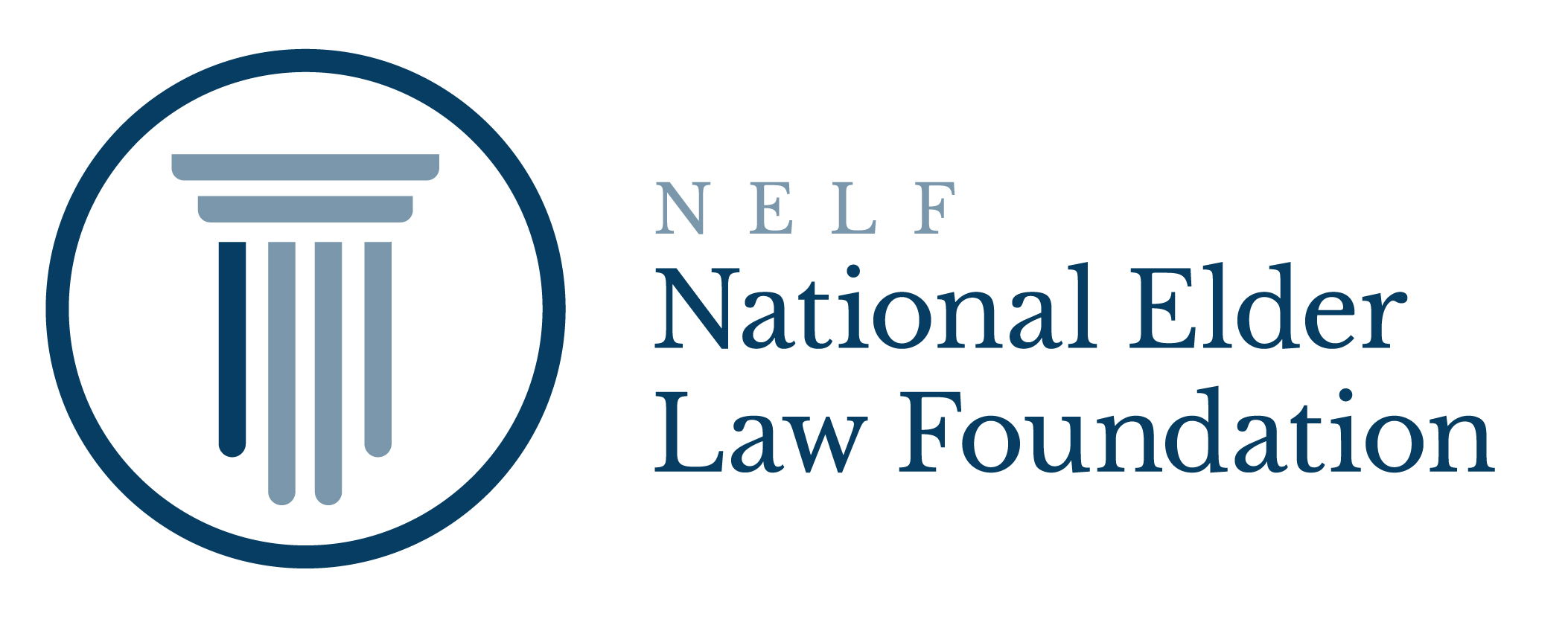Retirement Account Beneficiary Designations and Planning
Written for the Pennsylvania Bar Institute
- SELECTING BENEFICIARIES AND MAKING DISTRIBUTIONS.
Minimum distribution rules continue to apply after the participant’s death. The terms of these rules vary depending upon the Designated Beneficiary.- Spouse as Sole Beneficiary.
- There are special rules that apply when the surviving spouse is the sole beneficiary. Whether the surviving spouse is the sole beneficiary of the plan is determined as of September 30th of the year after the year in which the participant died.
- Required commencement date of distributions:
- If the participant died on or after his/her required beginning date, distributions to the surviving spouse must commence not later than December 31st of the year following the year of the participant’s death.
- If the participant died prior to his/her required beginning date, distributions do not have to begin until the later of December 31st of the year following the year of the participant’s death or the year in which the participant would have reached 70 ½ years of age.
- Spousal “Roll-Over” of Inherited Benefits: Surviving spouses have an option not available to other classes of beneficiaries. This option allows the surviving spouse to “roll-over” inherited benefits to his/her own retirement plan. There can be significant income tax benefits with this option. By rolling over the benefits, the surviving spouse becomes the participant,. The surviving spouse can then defer distributions until reaching his/her own required beginning date. Other benefits include:
- The ability of the surviving spouse to designate his/her own beneficiary(ies), thereby allowing for distributions to be made based upon joint life expectancy of the surviving spouse and his/her beneficiary.
- After the death of the surviving spouse, the beneficiaries of the plan will be able to defer distributions over their own life expectancies rather than being required to continue distributions based upon the surviving spouse’s life expectancy.
While there are significant benefits to the spousal roll-over, careful consideration should be given to this option when the surviving spouse is under the age of 59 ½. A 10% penalty would apply to distributions to the surviving spouse in most situations until the surviving spouse reaches age 59 ½.
- Children as Beneficiaries:
- If the participant dies before the required beginning date:
- One Child as Beneficiary. Where one child is the Designated Beneficiary, he/she will have the ability to take required distributions in annual installments beginning no later than December 31st of the year following the year of the participant’s death, over a period not longer than the beneficiary’s life expectancy, if that option is permitted by the plan. The other option is for the beneficiary to take distributions over five years.
- Multiple Children as Beneficiaries: When there are multiple children as designated beneficiaries, the beneficiaries must take distributions over a period not longer than the life expectancy of the oldest beneficiary, or within 5 years from the date of the participant’s death. The benefit may also be divided into separate accounts for the individual beneficiaries when the interests are fractional or percentage interests. Each beneficiary will then be able to defer distributions over his/her own life expectancy.
- If the participant dies after the required beginning date:
- One Child as Designated Beneficiary: The child beneficiary must take distributions from the plan over a period not longer than the longer of (1) the beneficiary’s remaining life expectancy or (2) the participant’s remaining life expectancy.
- Multiple children as designated beneficiaries: Where there are multiple children as designated beneficiaries, the beneficiaries must take distributions over a period not longer than the longer of the life expectancy of the oldest beneficiary or the participant’s remaining life expectancy, or within 5 years from the date of the participant’s death. The benefit may also be divided into separate shares for each of the individual designated beneficiaries when the interests are fractional or percentage interests. Each beneficiary would then be able to defer distributions over his/her life expectancy or the participant’s remaining life expectancy.
- If the participant dies before the required beginning date:
- Estate as Beneficiary or No Designated Individual or Qualified Trust Beneficiary:
- Where the participant dies before the required beginning date, and the estate is the beneficiary by designation or default, or there is no designated individual or qualified trust beneficiary, then the participant is treated as having no designated beneficiary and the benefits must be distributed within 5 years from the end of the year that contains the 5th anniversary of the participant’s date of death.
- If the participant dies after the required beginning date, and the estate is the beneficiary, whether by default or designation, or there is no designated individual or qualified trust beneficiary, then the participant is treated as having no designated beneficiary. The benefits will have to be distributed over the participant’s remaining life expectancy.
- Trusts as Beneficiaries:
- General Considerations: The regulations permit designation of a trust as beneficiary. The plan will still be considered to have a designated beneficiary for purposes of minimum distribution rules because the rules treat the trust beneficiaries as if they were named individually as the beneficiaries. This is provided that the following requirements are met:
- The trust must be valid under state law.
- The trust must be irrevocable or by its terms become irrevocable upon the death of the participant.
- The beneficiaries of the trust must be identifiable from the trust instrument.
- The following documentation must be provided to the plan administrator not later than October 31st of the year after the year of the participant’s death:
- A final list of all beneficiaries of the trust as of September 30th of the year following the year in which the participant died along with the certification that to the best of the trustee’s knowledge the list is true and correct, and that a copy of the trust will be provided to the plan administrator upon demand; or
- A copy of the actual trust document.
It is important that you contact the plan administrator to be certain that all required documentation is provided.
- All beneficiaries of the trust must be individuals. It is important to note that an estate is not an individual and therefore cannot be a designated beneficiary. No part of the benefits can be payable or pass through to an estate. Further, IRS letter rulings indicate that a trust provision that allows use of trust property to pay for the participant’s debts or probate expenses may be treated the same as naming the estate as the beneficiary, and you may end up with having no designated beneficiary.
- Income Tax Considerations: With the exception of grantor trusts, trusts are taxed as separate entities and are quickly included in the highest income tax bracket. For taxable income in excess of $9,350.00, the income will be taxable in the 38.6% bracket. If a client’s estate plan includes retirement benefits being distributed to a trust, consideration must be given to ways of avoiding or reducing the possible income tax exposure. These methods can include charitable contributions, distribution of the income to individual trust beneficiaries, and taking a deduction for the estate taxes paid on the retirement benefits.
- Credit Shelter Trusts: For trusts of which the surviving spouse is the beneficiary, if the surviving spouse is entitled to all of the income of the trust for life, but she does not have the right to demand distribution to herself of the entire amount of the participant’s retirement benefits payable to the trust, and she does not have the right to demand distribution to herself of whatever amounts are distributed from the retirement plan to the trust for her lifetime, then the trust remainder beneficiaries will be considered beneficiaries of the trust for purposes of the multiple beneficiary rule. The spouse will not be considered a sole beneficiary and thus will not be able to convert the IRA into her own IRA. Distributions will have to be made according to the provisions for multiple beneficiaries.
Because of this drawback, there are significant income tax disadvantages to funding a credit shelter trust with retirement benefits. A surviving spouse will likely have to receive the benefits sooner and the distributions will be made at a higher rate than if the surviving spouse had been able to roll the retirement benefits into his/her own IRA.
Many alternative solutions should be considered to minimize the disadvantages of funding a credit shelter trust with retirement benefits. These considerations include transfer of nonqualified assets to the spouse who will die first so that the credit shelter trust can be funded with nonqualified assets. Obviously, this cannot always be accurately predicted, and there are many situations where funding with retirement benefits, while not a perfect solution, is the best solution.
- Charitable Trusts: The easiest way to leave retirement benefits to a charity is to leave the benefits outright to the charity by designating the charity on the beneficiary designation form. The benefits will then be payable to the charity, thereby eliminating the income tax issues.
There are situations, however, where this is not an option because of circumstances such as the need to create a foundation to receive the benefits. In some circumstances, the benefits may first have to be distributed to an estate or a trust to be held until the charitable entity can be created. The significant disadvantage of this method is the income tax consequences of having taxable income for the trust or estate.
Use of charitable remainder trusts as beneficiaries of a retirement plan is possible. The estate would receive a deduction on the estate tax return for the actuarially determined value of the remainder interest. The charitable remainder trust pays no income tax when it receives the distributions from the retirement plan. However, income tax will be payable by the beneficiary to the extent distributions from the charitable remainder trust to the beneficiary are considered part of the retirement plan distribution.
- Special Needs Trusts as Beneficiaries: A special needs trust may be the beneficiary of retirement accounts. If the beneficiaries of the trust are members of a class of beneficiaries capable of expansion or contraction, they are treated as identifiable, if it is possible, as of the date the beneficiary is determined to identify the class member with the shortest life expectancy.
Because of the high tax bracket for trusts, it is desirable to distribute taxable income for the benefit of the disabled beneficiary. The distributions can be made directly to providers of services other than food, clothing, and shelter. If it is anticipated that the disabled beneficiary’s needs will be less than the required minimum distributions from the retirement accounts, then the special needs trust may not be the most desirable planning method. A careful review of expected expenses as well as your client’s goals and planning is very important.
It is very important that the distributions not be given to the beneficiary directly, as this may interfere with eligibility for SSI and/or Medical Assistance. Cash distributions to the beneficiary are always considered countable income for the beneficiary. In addition, gifts of assets that can be converted to cash may be considered countable assets depending upon the nature of the asset. Also, reimbursements to a beneficiary for purchases he/she has made will be considered countable income. In order to preserve eligibility for public benefits, it is very important that distributions from the trust be made directly to the providers of goods or services for the benefit of the disabled individual. These payments should be made for services other than food, clothing, and shelter.
- General Considerations: The regulations permit designation of a trust as beneficiary. The plan will still be considered to have a designated beneficiary for purposes of minimum distribution rules because the rules treat the trust beneficiaries as if they were named individually as the beneficiaries. This is provided that the following requirements are met:
- Spouse as Sole Beneficiary.
- POST-MORTEM CHOICES AND ACTIONS
There is significant value in utilizing the “life expectancy pay-out method.” The ability of the participant to take distributions over life expectancy is clear. After the death of the participant, the availability of this method is more limited. Several factors must be addressed:- Designated Beneficiary Determination. In order for benefits to be distributed to a beneficiary over life expectancy, there must be a Designated Beneficiary. On April 17, 2002, the IRS issued final minimum distribution regulations under Section 401(a)(9) of the Internal Revenue Code. These regulations established the date for determining the Designated Beneficiary as September 30th of the year following the year of the IRA owner’s death (the Designation Date).
This Designated Beneficiary must be an individual. A trust can also qualify as Designated Beneficiary if certain requirements are met. These requirements are outlined in the earlier portion of these materials dealing with Beneficiary Designations. An estate cannot be a Designated Beneficiary. The beneficiary must be designated either by the terms of the retirement plan or by the participant on a beneficiary designation form.
In the case of multiple beneficiaries, all of the beneficiaries must be individuals and they all must use the oldest beneficiary’s life expectancy to calculate required distributions. The exception to this is where the benefit is divided into separate accounts. This is allowable when the beneficiaries’ interests are fractional or percentage interests as of the date of death. The separate accounts must be established “no later than the last day of the year following the calendar year of the employee’s death”. Reg. §1.401(a)(9)-8, A-2
- Removal of Designated Beneficiaries. Post death planning by distribution or disclaimer can eliminate non-individual or other undesirable beneficiaries so that as of September 30th of the year following the year of death, only desirable beneficiaries are left as designated beneficiaries.
- Post-Death Deadlines.
- September 30th of the year following the year of death is the date by which all beneficiaries must be identified.
- October 31st of the year following the year of death is the date by which trust documentation must be supplied to the plan administrator.
- December 31st of the year following the year of death is the date by which separate accounts from multiple beneficiaries must be established.
- Qualified Disclaimers. There are many instances where a qualified disclaimer can be useful in post mortem planning. They can be used to redirect benefits to a more appropriate beneficiary, such as to create funding for a credit shelter trust. Certain requirements must be met. They are outlined in Reg. §25.2518(b) et. seq.
- The disclaimer must be irrevocable, unconditional, and in writing.
- The disclaimer must be delivered to “the transferor of the interest, the transferor’s legal representative, the holder of the legal title to the property to which the interest relates, or the person in possession of such property”.
- The disclaimer must be delivered within 9 months of the date of death in most cases. There are certain exceptions to this rule. Reg. §2518(b)(2).
- The disclaimant must not have “accepted the interest disclaimed or any of its benefits”.
- After the disclaimer, the property must pass to someone other than the disclaimant.
- The disclaimant cannot direct in any way how the property will pass after the disclaimer.
- Designated Beneficiary Determination. In order for benefits to be distributed to a beneficiary over life expectancy, there must be a Designated Beneficiary. On April 17, 2002, the IRS issued final minimum distribution regulations under Section 401(a)(9) of the Internal Revenue Code. These regulations established the date for determining the Designated Beneficiary as September 30th of the year following the year of the IRA owner’s death (the Designation Date).











